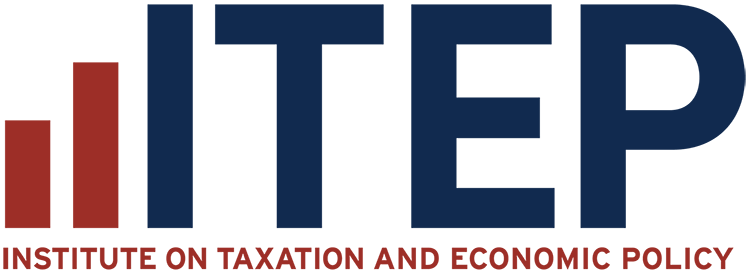The federal, state, and local distributional analyses and revenue estimates that ITEP produces are based on data from the ITEP Tax Microsimulation Model. The initial version of the ITEP Model was developed in 1996 and has undergone extensive updates and enhancements in the decades that followed. The model computes the revenue yield and incidence of both current tax law and proposed tax law changes. It is unique in its ability to produce analyses at the federal and state levels that comprehensively examine income, consumption, and property taxes. It is also the only tax microsimulation model capable of disaggregating tax incidence data by race and ethnicity at the state level.
The model’s starting point is a large database of taxpayer data and supplementary information. Federal tax return data from the Internal Revenue Service (IRS) are paired with observations from the U.S. Census Bureau’s American Community Survey (ACS) to create a valid representation of the U.S. population, including federal filers and nonfilers, both nationally and for every state. Weights assigned to each record in the model indicate the number of real-world tax units it represents.
These data are further supplemented through a statistical match with the ACS to gain access to data available in the ACS but not on tax returns. The entire dataset is also supplemented with imputed values based on econometric analysis of other datasets such as the Bureau of Labor Statistics’ Consumer Expenditure Survey and the Federal Reserve’s Survey of Consumer Finances.
Each record in the model includes components of personal income and of consumer spending, the value of real and personal property, and a wide range of other tax items and demographic and social characteristics. The weights are assigned in a way that allows the model to reflect state-by-state and national targets taken from published reports for 2019 by the Internal Revenue Service, the Bureau of the Census, and other sources. The model also contains local-level weights for certain local jurisdictions of interest.
For years after 2019, the model adjusts the value of every component of personal income, and the weights associated with each record, to reflect targets published by the Internal Revenue Service, the Congressional Budget Office, and other sources, with variation across states to reflect differences in growth trajectories.
The ITEP Model’s structure mirrors models at the federal level maintained by the congressional Joint Committee on Taxation, the U.S. Treasury Department, and the Congressional Budget Office, and at the state level by the Minnesota Department of Revenue and other state agencies. Microsimulation modeling is widely regarded as the best approach to tax policy analysis because of its ability to account for overlapping and interacting tax provisions and to produce results that are representative of the full population. The ITEP Model’s main distinguishing characteristic is that it can be used to produce accurate incidence and revenue estimates for income, consumption, and property taxes at the state level, disaggregated by both income level and race or ethnicity.
The ITEP Tax Microsimulation Model is divided into a set of modules, each of which focuses on a particular type of tax. Each module consists of two broad parts. The first is the microdata set described above. The second is a series of calculators reflecting the laws, policy proposals, and variables to be applied to each record in the microdata.
Below is an outline of the primary ITEP Tax Microsimulation Model modules and their capabilities:
The Personal Income Tax Module analyzes the revenue and incidence of current federal, state, and local personal income taxes and policy options. The ITEP Model’s personal income tax module contains a series of tax calculators reflecting both past and present federal, state, and local personal income tax laws. These calculators were built by ITEP staff through careful review of tax forms, statutes, and recently enacted legislation. Applying those calculators to the detailed microdata described above yields distributional results and tax revenue estimates for the jurisdiction being analyzed.
The Consumption Tax Module analyzes the revenue yield and incidence of taxes levied on the purchase of goods and services and on business gross receipts. There are more than 700 tax base items available in the item database, which allow for accurate modeling of the wide array of different sales tax bases used at the state and local levels, as well as various smaller taxes levied on narrow categories of spending. Most of the model’s consumption data are dollar spending values, though the model also has quantity estimates for items such as motor fuel and tobacco that are often taxed based on quantity purchased rather than amount spent. The consumption module also includes supplementary data on visitor consumption, reflecting the in-state purchases of individuals residing in other states or countries, and for business consumption, reflecting the in-state purchases of both capital goods and short-lived intermediate inputs by businesses competing in local and national markets. The tax calculators in this module reflect the sales tax policies of a range of national, state, and local jurisdictions. Applying those calculators to the database yields distributional results and tax revenue estimates for the jurisdiction being analyzed.
The Property Tax Module analyzes revenue yield and incidence of current state and local taxes on real and personal property. It can also analyze the revenue and incidence impacts of statewide policy changes in property tax, including the effect of circuit breakers, homestead exemptions, and other tax reduction devices. Each record in the microdata set includes real and personal property data such as homeowner status, home value, rent, vehicle count, and vehicle value. The tax calculators in this module reflect the property tax policies of a range of state and local jurisdictions. Applying those calculators to the database produces separate estimates for property taxes on owner-occupied homes, residential rental property, business property, vacation homes, motor vehicles, and real estate transfers.
ITEP TAX MICROSIMULATION MODEL DATA SOURCES
The ITEP Model uses the following microdata sets and aggregate data:
IRS Individual Public Use Tax Files; American Community Survey Public Use Microdata Samples; IRS Statistics of Income, Individual Tax, By State; IRS Statistics of Income, Business Tax, National and By State; Bureau of Labor Statistics Consumer Expenditure Survey; Census American Community Survey tabular data; Survey of Income and Program Participation; Panel Study of Income Dynamics; Survey of Consumer Finances; miscellaneous IRS data; state tax, budget, and fiscal agency data from all 50 states and the District of Columbia; state assessors data; Census Government Finance data; Congressional Budget Office and Joint Committee on Taxation forecasts; Bureau of Economic Analysis (BEA) Gross Domestic Product by State and National, by Industry; BEA Personal Consumption Expenditures National and by State; BEA Fixed Assets By Industry; BEA Input-Output Accounts Data; American Housing Survey; Census of Population Housing; Energy Information Administration; state transportation department data; Federal Highway Administration (FHWA) Highway Statistics series; FHWA’s National Household Travel Survey; U.S. Department of Transportation Bureau of Transportation Statistics; National Equity Atlas (produced by PolicyLink and the USC Program for Environmental and Regional Equity); Census County Business Patterns; U.S. Department of Agriculture National Household Food Acquisition and Purchase Survey; U.S. Travel Association reports; American National Election Studies; National League of Cities; Centers for Disease Control and Prevention; Kaiser Family Foundation; Rental Housing Finance Survey; Zillow Price-to-Rent Ratio data; EY reports; Lincoln Institute of Land Policy and Minnesota Center for Fiscal Excellence reports; Current Population Survey Tobacco Use Supplement; Orzechowski and Walker’s Tax Burden on Tobacco; Distilled Spirits Council data; state liquor agency data; American Gaming Association; U.S. Department of Education National Center for Education Statistics; Insurance Information Institute; Society of Actuaries data; Federal Reserve Board, Financial Accounts of the United States.

